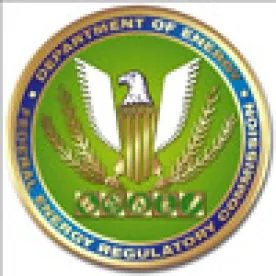The Annual Report provides information concerning the Office of Enforcement’s efforts in fiscal year 2015.
On November 19, the Federal Energy Regulatory Commission’s (FERC’s or the Commission’s) Office of Enforcement (OE) issued its 2015 Report on Enforcement (Annual Report). The Annual Report, which is required by the Commission in its Revised Policy Statement on Enforcement, provides information concerning the OE’s activities during fiscal year 2015 in each of four divisions within the OE: the Division of Investigations, the Division of Audits and Accounting, the Division of Energy Market Oversight, and the Division of Analytics and Surveillance.
OE staff presented the Annual Report at the Commission’s November open meeting. In their presentation, OE staff members briefly summarized the OE’s enforcement and audit-related activities during 2015. The presentation and the Annual Report note that the OE’s priorities in fiscal year 2015 largely focused on four primary areas:
- Fraud and market manipulation
- Serious violations of mandatory reliability standards
- Anticompetitive conduct
- Conduct that threatens transparency in regulated markets
The Annual Report explains that the Division of Investigations opened 19 new investigations in 2015 and closed 22 pending investigations with either no action or through a Commission-approved settlement. The Division of Investigations also received nearly 200 hotline inquiries and requested immediate FERC review of alleged violations. Collectively, the OE was able to lay claim to more than $26 million in civil penalties in 2015 through settlements. However, the Annual Report notes that several matters in 2015 are subject to ongoing litigation, which could result in the collection of more than $500 million in additional civil penalties.
The OE also received well beyond 100 self-reports from regulated entities and took adverse action only in a minority of those cases, finding that most self-reporting entities had identified and implemented self-corrective actions and had caused little or no market harm.
As noted above, several matters originating with the OE have been and remain subject to litigation. Historically, since the Energy Policy Act of 2005 provided FERC with enhanced penalty authority, OE investigations rarely resulted in litigation. Rather, the OE’s prolonged investigative process and FERC’s substantial penalty authority would often contribute to an entity’s decision to enter into a settlement that would resolve the issues. In 2015, however, the OE litigated one case before a FERC Administrative Law Judge and engaged in litigation in five other matters in US district courts across the country. Although the FERC administrative hearing involved allegations of violations of the Natural Gas Act, FERC’s litigated matters in the federal courts all involve alleged violations of the Federal Power Act. The Annual Report provides additional detail concerning each of those litigated proceedings.
From an audits perspective, the Annual Report notes that the Divisions of Audits and Accounting conducted 22 audits of oil pipeline, public utility, and natural gas companies during 2015. These efforts reflected a slight increase from the division’s 2014 activities and led to several hundred corrective action recommendations and to the issuance of more than $26 million in refunds. Entities subject to FERC jurisdiction should note that the OE is entitled to conduct both financial (or rate) audits and performance (or nonrate) audits, and that under both the Federal Power Act and the Natural Gas Act, audits can be conducted of both regulated entities and persons who participate in control of regulated entities. The OE’s reported 2014 and 2015 numbers may not fully reveal the occasional intensity of the audit process—many audits extend for periods of many months (or even years), and the conclusion of 22 audits in a calendar year might mask the fact that a larger number of audits is actually in progress at any given moment.
The Annual Report also states that the Division of Analytics and Surveillance, which was established in 2012, worked on more than 30 investigations in 2015. In addition, the division played an instrumental role in developing a Notice of Proposed Rulemaking that would impose substantial new reporting obligations on market participants within independent system operators and regional transmission organizations as well as their “connected entities.” That proposed rulemaking is open for public comment at this time and was recently the subject of a Morgan Lewis webinar discussing the impositions and implications that the proposed requirement would have throughout the power industry, if adopted.
Following its presentation, OE staff fielded questions from members of the Commission. In response to an inquiry from Commissioner Cheryl LaFleur regarding any trends in the market that the OE has been able to identify, OE staff member Todd Hettenbach stated that it is “difficult to draw trends from that data.” Acknowledging that the OE has historically observed and investigated a number of instances of cross-market manipulation, Mr. Hettenbach explained that the OE continues to look at all potential types of manipulative conduct and is not exclusively focused on cross-market manipulation. Mr. Hettenbach continued to say that OE has in fact received “strong referrals” from the various independent system operators and regional transmission organizations, which the OE believes will assist it in identifying “emerging” types of manipulation as well as alleged gaming strategies.



 />i
/>i

